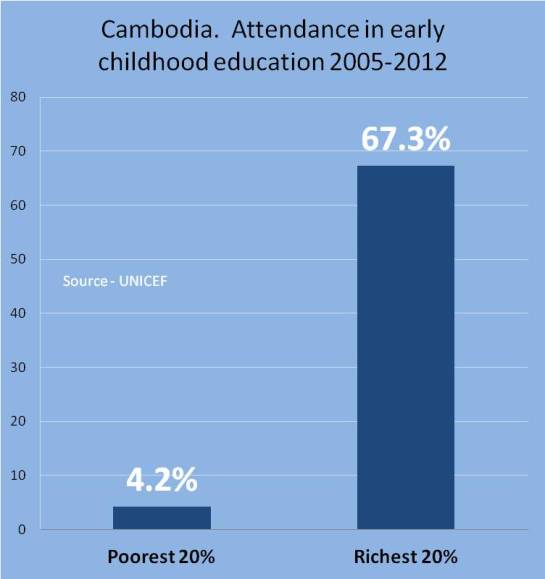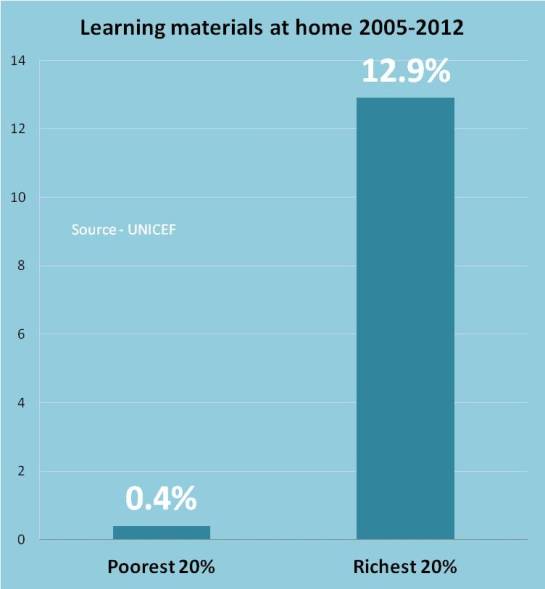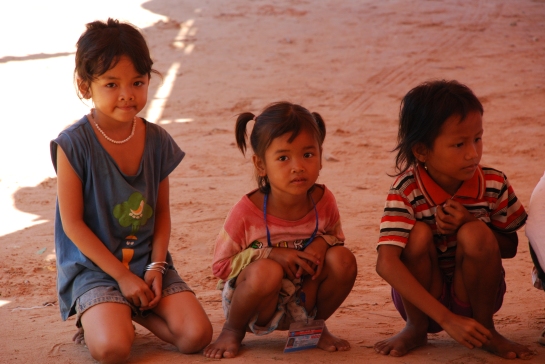Lolei Village is very near Savong’s School in terms of distance from Siem Reap, but is located further North; over the road as it were, with Number 6 Highway cutting its dangerous swathe between Lolei and the Rolous temples of Bakong.
In the heart of the village is the home of teacher Sovannarith who now runs a school of his own, dedicated to teaching English and computer skills to the children of his village. He used to teach at Savong’s School, right back in the days when salaries were a competitive $US45 a month and computer education was not even feasible.

The “before” shot. Some 12 years ago – 2007 – we took this photo in a freshly painted classroom at Savong’s School. Sovannarith hasn’t changed, but since then my hair has adopted a Paul Newman silver.
After teaching at Savong’s School for several years, while he studied hard to complete his arts degree from the internationally recognised Pannasastra University of Cambodia, Sovannarith harbored dreams of running his own school. He wanted something for his own community. I was keen to see what he had achieved since 2011.
Actually since 2005 I had already been familiar with the local school situation in Lolei thanks to the great work of Schools for Children of Cambodia (SCC), a registered and well-run charity from the UK that focuses on the rural children of Siem Reap province. Like us, I’m sure they must constantly explain that despite the boom town quality of Siem Reap, the rural areas are still desperately poor. One of the original schools they supported, back in 2005, was in Lolei Village.
Alas and through no fault of SCC the arrangement didn’t work out, and rather than run the school in their prescribed way the then headmaster had a seriously divergent view of how the school ought to run. SCC walked, and soon put their hard earned funds to better use elsewhere. They continue to excellent work.
But from that story, told to me by members of the SCC, I was always aware that Sovannarith’s village had an educational gap whereby the local State School still provided inadequate teaching of English (and computer skills) to children who need both if they wish to proceed into salaried employment or further tertiary education.
Enter Sovannarith who set up Angkor Legacy Academy in April 2011. It is a vibrant place, with high quality volunteers (the one’s I met were a quantum leap from the gangling gap-year ‘Facebook Volunteers’ who often visit these organisations.) and a well equipped computer lab with late-model laptops. The vibe was happy, busy and thriving.

The “After” shot. 2019. I turned up unannounced at Sovannarith’s school in Lolei and Rith strode up to the tuk tuk as I alighted – “Greetings stranger!” he announced. “Long time no see!” Comparing the photos, I wonder if he was referring to our mutual need for glasses.
Sovannarith made me feel very welcome, and during our brief chat (I was on the way to Savong’s School,) we reflected on times past. Sovannarith hasn’t changed one bit. He is still passionate about educating the children of rural Cambodia. But he was kind enough also to say that his time at Savong’s School was what got him started – we gave him a teaching job and in those years he learned a lot about running a classroom and running a school. “Without that experience I wouldn’t be here today running the Angkor Legacy Academy,” he told me.
That made me feel very gratified. In 2004 when we commenced plans to build a school in Bakong, Savong and I never dreamed that his school would help multiply the number of teachers and schools. I can count 9 schools that began in a similar fashion to Sovannarith’s project and owe their start to Savong’s initial vision. If anything, that is the major achievement of the project. I think SCC and other organisations can also claim similar influence. As I’ve found in business, losing good staff can be sad – but seeing them succeed is a wonderful thing.
Links:
Schools For Cambodian Children
For more on this theme:









You must be logged in to post a comment.